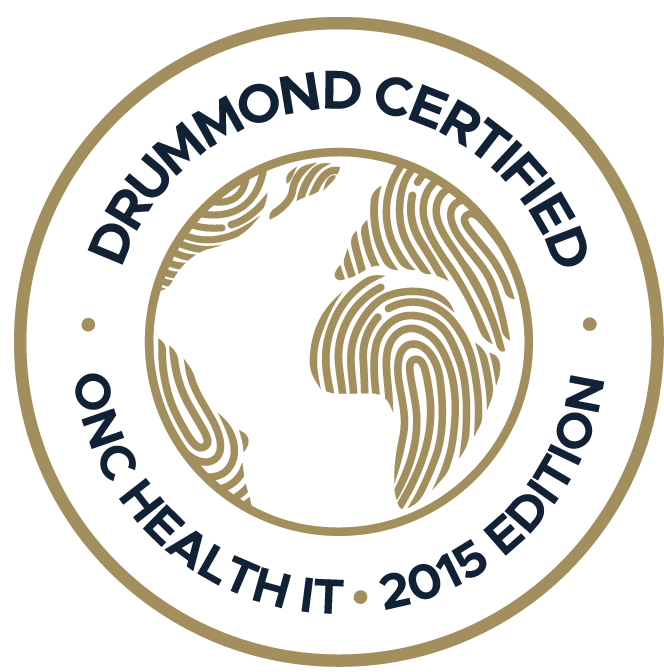ACA enhanced subsidies may expire at the end of December. And that uncertainty is already shaping patient decisions this open enrollment season. Many will switch plans, some may drop coverage, and medical practices need...
Have you ever considered the impact of data breaches on the healthcare industry? Each year, the U.S. healthcare sector loses around $6.5 billion due to these breaches, putting sensitive patient information at risk. Data breaches are a significant financial burden and a major concern for patient privacy and trust. Ensuring adequate data security in EHR systems is crucial for protecting this valuable information from unauthorized access and potential misuse.
Implementing effective cybersecurity measures is crucial to protecting electronic health records (EHR). These measures help prevent data breaches, maintain patient confidentiality, and comply with regulations like HIPAA. HIPAA compliance is a legal requirement that mandates the protection of patient data, making it a top priority for healthcare providers.
In this blog, we will explore top strategies for enhancing data security in EHR systems. By following these best practices, healthcare organizations can minimize risks, protect patient information, and ensure compliance with cybersecurity standards and regulations.

1. Implement Strong Physical Safeguards
Between 2010 and 2013, 29 million records were compromised by data breaches reported by HIPAA-covered entities. According to research, most of these breaches (67.4%) occurred via electronic media, often involving laptops or portable electronic devices. The theft was the primary cause, accounting for 58.2% of these breaches. This highlights the need for more rigid physical safeguards to protect sensitive data.
One effective measure is to control physical access to areas where sensitive data is stored. This includes using locks on laptops and securing network servers in locked locations. Security cameras can also deter unauthorized access and provide evidence in case of a breach. These steps can significantly reduce the risk of data theft and guarantee that sensitive information remains secure.
Additionally, using tamper-proof equipment and employing Radio Frequency Identification (RFID) for secure access further strengthens physical safeguards. By implementing these measures, healthcare practices can protect patient data from physical threats and contribute to overall data security in EHR systems.
2. Adopt Comprehensive Technical Safeguards
The US government has developed the Safety Assurance Factors for EHR Resilience (SAFER) Guides to help healthcare providers use EHRs more safely. These guides include self-assessment checklists, practice worksheets, and recommended practices across nine key areas.
The SAFER Guides cover organizational responsibilities, patient identification, clinical communication, test results review and follow-up, system configuration, and contingency planning. Implementing these guidelines helps healthcare practices identify vulnerabilities and improve their EHR systems' security. For example, using encryption and firewalls protects sensitive data from unauthorized access, while role-based authentication makes sure that only authorized personnel can access specific information.
By following the SAFER Guides, healthcare providers can create a strong security framework for their EHR systems. This approach safeguards patient data and guarantees compliance with HIPAA regulations, ultimately contributing to a more secure and efficient healthcare environment.
3. Take Administrative Measures to Ensure Data Security
According to a study by The HIPAA Journal, 2023 saw an unprecedented number of hacking incidents, with over 124 million health records compromised in 725 attacks. These alarming numbers highlight the importance of strong administrative measures.
Implementing comprehensive training programs for staff is a critical step. Employees need to understand the importance of data security and know how to handle potential threats. Regular training sessions can help staff stay updated on the latest cybersecurity practices and recognize phishing attempts or other malicious activities.
Additionally, having clear policies and procedures for data handling and access control can significantly reduce risks. Assigning a Chief Information Security Officer (CISO) to oversee these protocols guarantees accountability and continuous improvement in security practices. By strengthening administrative safeguards, healthcare practices can better protect patient data and maintain data security in EHR systems.
4. Improve Cybersecurity Measures
For the 13th consecutive year, in 2023, the healthcare industry experienced the most costly data breaches, averaging $10.93 million per incident, according to a report by the World Economic Forum. This statistic is another wake-up call for practices and underscores the urgent need for improved cybersecurity measures.
One effective strategy is to implement multi-factor authentication (MFA), which adds an extra layer of data security in EHR systems by requiring multiple forms of verification before granting access. Additionally, keeping software up-to-date with the latest patches and updates can prevent hackers from exploiting known vulnerabilities.
Furthermore, regularly conducting risk assessments and using advanced threat detection systems can also help identify and mitigate potential security threats in real-time. By prioritizing cybersecurity measures, healthcare organizations can better protect their patients' data and maintain the integrity of their EHR systems.
5. Strengthen Access Control and User Authentication
With healthcare data breaches costing millions of dollars, making sure that only authorized personnel can access sensitive patient information is important. This can be achieved through role-based access control, where users are granted access based on their job functions, and authentication methods like multi-factor authentication (MFA) are employed.
For example, a hospital might implement MFA, requiring both a password and a fingerprint scan for access to the EHR system. This approach significantly reduces the risk of unauthorized access. Additionally, regular audits and monitoring of access logs can help detect and respond to suspicious activities promptly, further enhancing data security.
Investing in robust access control measures and user authentication protocols protects patient data and builds trust with patients, knowing their information is secure. By prioritizing these precautions, healthcare organizations can mitigate the risk of costly data breaches and maintain data security in EHR systems.

6. Comply with Standards and Regulations
Adhering to frameworks like HIPAA and using comprehensive cybersecurity measures are critical steps in protecting patient information. HIPAA compliance mandates strict protocols for safeguarding health data, including regular risk assessments, data encryption, and access controls.
For example, a clinic might conduct annual HIPAA compliance reviews to identify potential vulnerabilities and implement necessary security measures. This could involve updating encryption methods or improving employee training on data security practices. By following these standards, healthcare providers can significantly reduce the risk of data breaches and make sure that patient information remains secure.
Additionally, integrating these cybersecurity measures into everyday practices reinforces the organization's commitment to data security in EHR. This approach protects sensitive information and fosters patient trust and confidence. Keeping up with regulatory changes and adopting best practices for cybersecurity helps healthcare providers stay ahead of potential threats and maintain a secure environment for patient care.
Practice EHR - ONE That Prioritizes Data Security and Confidentiality!
Practice EHR is dedicated to implementing the best cybersecurity measures and adhering to strict HIPAA compliance standards to protect sensitive patient information. PracticeEHR provides a secure environment that protects sensitive health data from potential breaches by integrating advanced encryption, cloud-based data storage, access controls, and regular security audits.
Choosing PracticeEHR means selecting a partner that values the confidentiality and security of your patient information. With a focus on continuous improvement and adherence to industry best practices, PracticeEHR guarantees that your practice stays compliant with all relevant regulations. Choose PracticeEHR to have a comprehensive, secure, and reliable EHR solution at your service that prioritizes data security and confidentiality!
Topics: Patient Care, EHR Solution, Specialty-Specific EHR, digital age, HIPAA Security, Industry Update, Medical Billing, Medical billing services, RCM, EHR, Technology in Healthcare, Kiosk, Data Security
RECENT POSTS



TOPICS
- EHR Solution (190)
- EHR (125)
- digital age (118)
- Patient Care (115)
- Medical Billing (111)
- Specialty-Specific EHR (110)
- Industry Update (97)
- Technology in Healthcare (84)
- EHR Features (79)
- Small Practice (76)
- Medical billing services (73)
- Integrated EHR (63)
- HIPAA Security (62)
- RCM (62)
- New Technology (44)
- Cloud-based EHR (43)
- Telemedicine (42)
- Healthcare Office Management (39)
- Practice EHR News (38)
- Kiosk (31)
- Revenue Cycle Management (28)
- AI Solutions (24)
- ePrescribing (21)
- AI Scribing (17)
- Best EHR Software (16)
- EMR (12)
- Practice Management Software (12)
- AI-powered Medical Billing (11)
- Practice Automation (11)
- AI EHR (10)
- Client Favorites (10)
- TeleVisit (10)
- The ONE (10)
- Switching to New EHR (9)
- AI Scribe (8)
- Best EHR Practice (8)
- EHR Integration (8)
- MACRA/MIPS (8)
- Patient Portal (8)
- Urgent Care (8)
- Psychiatry EHR (7)
- AI scanning (6)
- E-Prescribing (6)
- Product Updates (6)
- events (6)
- Automated Health Tools (5)
- MIPS (5)
- Mobile EHR (5)
- Family Medicine EHR (4)
- HIPAA (4)
- Integrated Practice Management (4)
- Internal Medicine EHR (4)
- MIPS Reporting (4)
- Medical Practice Management Software (4)
- Multilingual AI Scribe (4)
- Orthopedics EHR (4)
- Podiatry (4)
- Podiatry EHR (4)
- Regulatory Updates (4)
- Telehealth Platform (4)
- Chiropractic EHR (3)
- Digital Experiences (3)
- EHR Flaws (3)
- EHR Implementation (3)
- EHR for Chiropractors (3)
- EHR for Small Practices (3)
- Eligibility Verification in Medical Billing (3)
- Insider (3)
- Patient Check-in Kiosk (3)
- PracticeEHR GO App (3)
- Telehealth Platforms (3)
- Cash Flow (2)
- Cashless Payments (2)
- Clearinghouse (2)
- Dermatology EHR (2)
- EHR Scheduling (2)
- Family Medicine (2)
- Foot and Ankle Care (2)
- Foot and Ankle EHR (2)
- Health records 101 (2)
- Healthcare Compliance Certification (2)
- Medical Coding Services (2)
- Medical Credentialing (2)
- Pediatrics EHR (2)
- Quality of Patient Care (2)
- Reporting Under MIPS (2)
- Risk and Liability in Medical Settings (2)
- Voice-Activated AI Scribe (2)
- What Works Clearinghouse (2)
- ACA Subsidy (1)
- AI Scan (1)
- AI Scribe for Pediatric Care (1)
- Automated EHR (1)
- Bariatric EHR (1)
- Behavioral Health Practices (1)
- Billing Communication (1)
- Billing for Private Practices (1)
- Cardiology EHR (1)
- Charting (1)
- Data Security (1)
- Dos and Don'ts (1)
- EHR Guides (1)
- EHR KPIs (1)
- EHR Questions to Ask (1)
- EHR Transition (1)
- EHR for Chronic Illness (1)
- EMR vs EHR Difference (1)
- ENT EHR (1)
- Endocrinology EHR (1)
- Gastroenterology (1)
- Gastroenterology EHR (1)
- General Surgery EHR (1)
- Geriatric AI scribe (1)
- Geriatrics EHR (1)
- Guides (1)
- Healthcare Practice Office Management (1)
- Help Center Videos (1)
- Insurance Reimbursement (1)
- KPI (1)
- Key Performance Indicators (1)
- Lab Processing (1)
- MACRA (1)
- Medical Billing Partner (1)
- Nephrology EHR (1)
- Neurology EHR (1)
- Pain Management EHR (1)
- Patient Behavior (1)
- Pediatric Care (1)
- Physical Therapy EHR (1)
- Practice Cash Flow (1)
- Practice Efficiency (1)
- Pulmonology EHR (1)
- Reconsider Your EHR (1)
- Simplify Practice Management (1)
- Staffing in Healthcare (1)
- Switch Medical Billing Providers (1)
- Urgent Care Medical Billing (1)
- Urology EHR (1)
- insurance claim denials (1)








